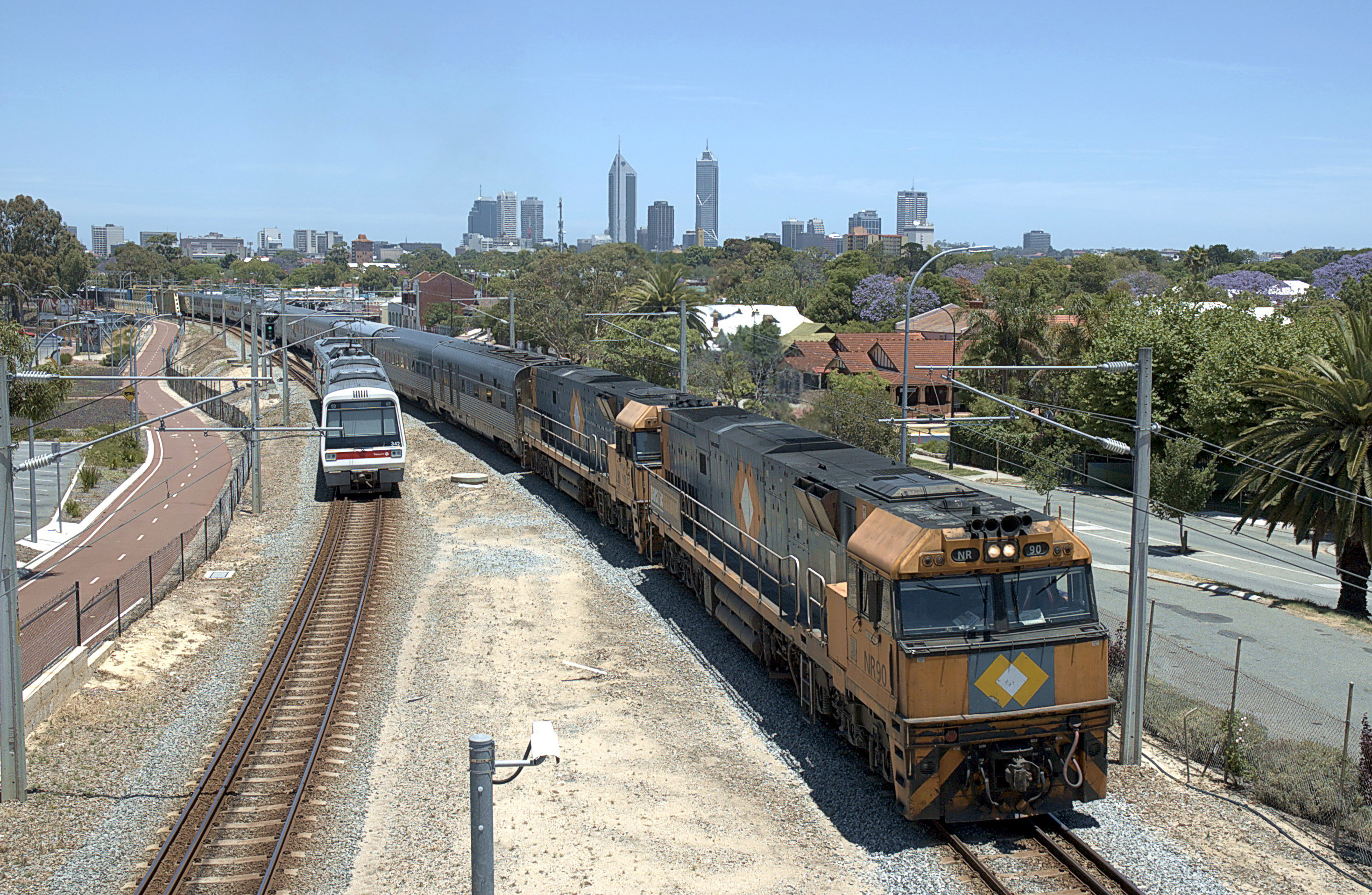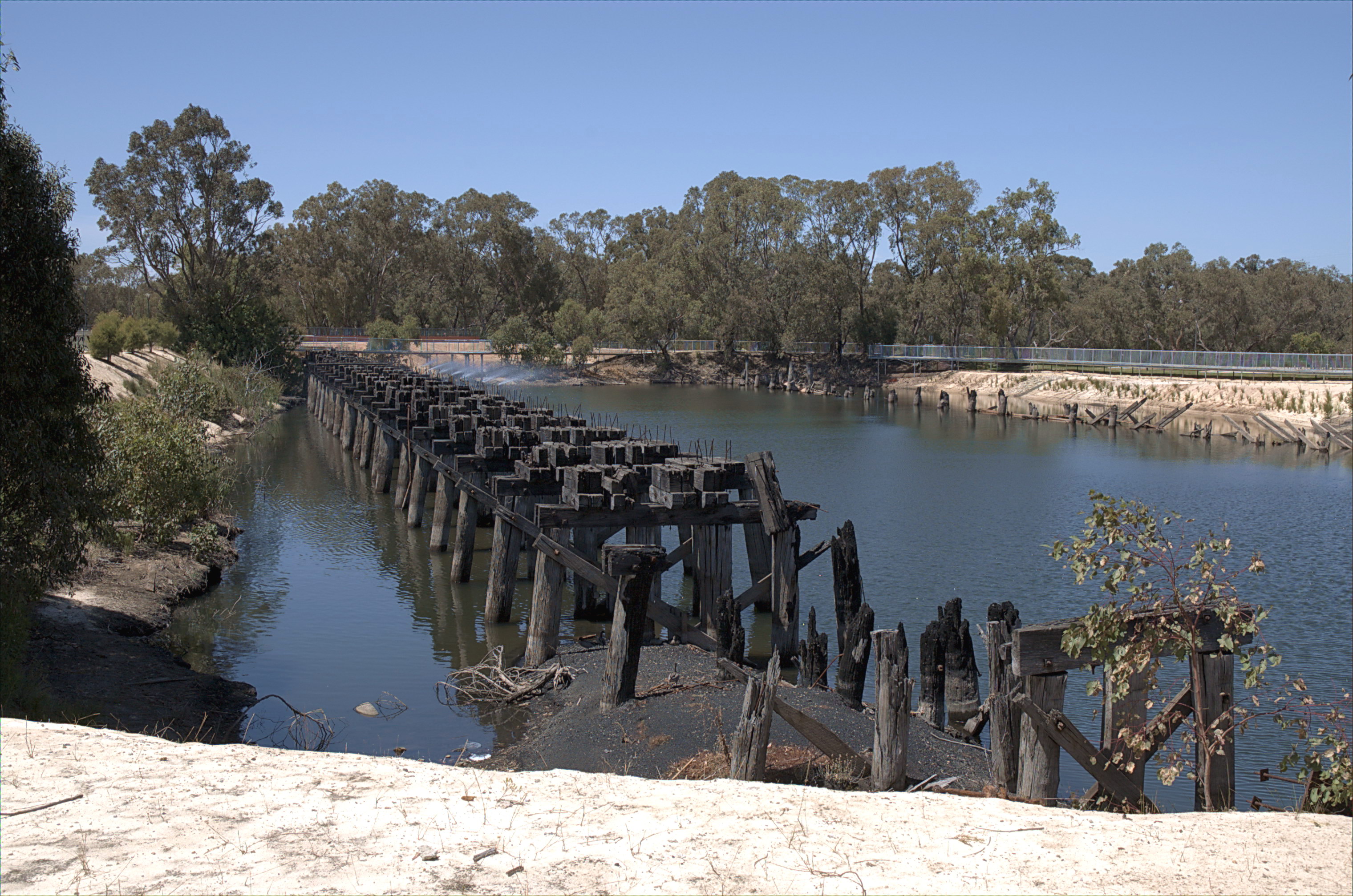|
WAGR C Class (1880)
The WAGR C Class was a class of steam locomotives built by Robert Stephenson and Company for the Western Australian Government Railways in 1880 to the same design as the NZR F class. History The C class were ordered from Robert Stephenson and Company, Newcastle upon Tyne, Newcastle to operate services on the first railway line in Perth, which was the Eastern Railway (Western Australia), Eastern Railway from Fremantle railway station, Fremantle to Guildford railway station, Perth, Guildford. However they were not ready when the line opened on 1 March 1881, with number 1 released from final assembly at Fremantle Railway Workshops the following day with number 2 entering service in May 1881. When delivered, they did not have bunkers with the wood that fired them having to be stowed in the cabs, so bunkers were retrofitted in May 1881 and August 1881. When engine class designations were introduced in 1885, they became the C class, numbered C1 and C2. [...More Info...] [...Related Items...] OR: [Wikipedia] [Google] [Baidu] |
Perth Railway Station
Perth railway station is the largest station on the Transperth network, serving the central business district of Perth, Western Australia. It serves as an interchange between the Airport, Armadale, Fremantle, Joondalup, Mandurah and Midland lines as well as Transwa's ''Australind'' service. History Establishment The foundation stone for the original Richard Roach Jewell-designed Perth station was laid on 10 May 1880, with the station opening on 1 March 1881 as part of the Eastern Railway from Fremantle to Guildford. The station had one through platform with a terminating dock platform at the east end; however it soon proved to be inadequate for the growing railway, and after the opening of the Armadale line in 1889 put further stress on the facility it was decided that a larger station would be built. The new, larger Victorian Free Classical style station building, designed by George Temple-Poole, was opened south of the original station in 1894, with the old building d ... [...More Info...] [...Related Items...] OR: [Wikipedia] [Google] [Baidu] |
Northam Railway Station, Western Australia
Northam railway station is located in Northam on the Eastern Railway route in Western Australia. It is the second and more recent railway station in Northam. Original station The line to Northam opened on 13 October 1886 at the end of a 15 kilometre branch line from Spencers Brook on the Eastern Railway. When the Eastern Railway was extended to Southern Cross on 1 July 1894, it was done so via Northam.Welcome to the Old Railway Station Museum Northam Heritage Forum Northam became an important with a large yard, signalbox and locomotive depot to serve lines radiating out to [...More Info...] [...Related Items...] OR: [Wikipedia] [Google] [Baidu] |
Rail Transport In Western Australia
Railways in Western Australia were developed in the 19th century both by the Government of Western Australia and a number of private companies. Today passenger rail services are controlled by the Public Transport Authority (a department of the Government of Western Australia) through Transperth, which operates public transport in Perth, and Transwa, which operates country passenger services. Great Southern Rail operates the ''Indian Pacific''. The interstate standard gauge line east from Kalgoorlie is owned by the Australian Rail Track Corporation, with most other lines leased by the state to Arc Infrastructure. Freight rail was privatised in 2000. General intrastate freight is mainly operated by Aurizon, while grain traffic is also operated by Aurizon under contract to the CBH Group. Interstate traffic is operated by Pacific National and SCT Logistics. Aurizon also operate an interstate mineral sands service to Kwinana from Broken Hill for Tronox. A number of private iron or ... [...More Info...] [...Related Items...] OR: [Wikipedia] [Google] [Baidu] |
WAGR C Class (diesel)
The C class are a class of diesel locomotives built by English Electric, Rocklea for the Western Australian Government Railways in 1962. History The C class was developed from the Queensland Railways 1250 class. The three members of the class entered service in 1962. They initially hauled passenger services including '' The Australind'', ''The Kalgoorlie'' and ''The Westland'' before being relegated to hauling suburban passenger services in Perth and shunting at Avon, Forestfield and Geraldton. The last was withdrawn by Westrail Western Australian Government Railways (WAGR) was the operator of railway services in the state of Western Australia between October 1890 and June 2003. Owned by the state government, it was renamed a number of times to reflect extra responsi ... in the March 1992 with all three preserved. C1703 is accredited for mainline operation and is periodically used on infrastructure trains. References * * External linksHistory of Western Austral ... [...More Info...] [...Related Items...] OR: [Wikipedia] [Google] [Baidu] |
WAGR C Class
The WAGR C class was a class of light axle load steam locomotives operated by the Western Australian Government Railways (WAGR) between 1902 and 1961. A total of 22 were built in two batches. History The first batch of 12 engines was built by Baldwin Locomotive Works, Philadelphia in 1902. This batch was originally of a 4-6-0 wheel arrangement, and was a lighter version of the Ec class, gaining them the ''Baby Yanks'' nickname. Between 1908 and 1918 these were fitted with larger, improved boilers and converted to a 4-6-2 configuration. A second batch of 10 engines was built by the WAGR's Midland Railway Workshops in 1915, to the modified 4-6-2 design. They entered service on mixed passenger and mail services on the Eastern, Eastern Goldfields and Great Southern lines. They later operated on the Northern and South Western lines. Seventeen members of the class were later fitted with superheaters and reclassified as the Cs class with the first completed in June 1929. In th ... [...More Info...] [...Related Items...] OR: [Wikipedia] [Google] [Baidu] |
Worsley, Western Australia
Worsley is a town in Western Australia located in the South West region near the town of Collie. The town is within the Shire of Collie. The town's name comes from the Worsley River, a tributary of the Collie River, which is located nearby. The river was named after Charles Anderson-Pelham, Lord Worsley, a member of the Western Australian Land and Emigration Committee, which also included James Stirling, John Hutt, William Hutt (MP), Edward Barrett-Lennard and Captain Bunbury. The committee promoted emigration to the Swan River colony and the Western Australian Land Company, which established the Australind land settlement project in 1841 under Marshall Waller Clifton. The name was first recorded in surveys performed in the area in 1845. In the 1890s a railway siding was constructed in the area to service the timber industry, and later in 1906 the state government decided to create a town-site in the area. Lots were surveyed in 1907 and the town was gazetted in 1909. The ... [...More Info...] [...Related Items...] OR: [Wikipedia] [Google] [Baidu] |
Western Australian Rail Transport Museum
The Railway Museum, also known as the Rail Transport Museum, is situated in Bassendean, Western Australia. It is run by the Western Australian division of the Australian Railway Historical Society (ARHS), which is called Rail Heritage WA. In the early days of operation it had in places been known as the ''Western Australian Rail Transport Museum'', and more recently, ''Rail Transport Museum''. On the internet and social media, it has been referred in variants with qualifiers of the location name such as the ''Bassendean Rail Museum'' and ''Rail Heritage Museum Bassendean''. The standard name is currently utilised as the ''Railway Museum''. Collection It has the most comprehensive collection of heritage steam locomotives and rolling stock in Western Australia. It was originally developed in 1969, and officially opened in November 1974 by the Western Australian Minister for Transport Ray O'Connor. ::Diesel Locomotives ::Steam Locomotives - include representatives of most cla ... [...More Info...] [...Related Items...] OR: [Wikipedia] [Google] [Baidu] |
Claremont Showground
The Claremont Showground near Perth, Western Australia is home to the annual Perth Royal Show. In 1902, of land were reserved in the Perth suburb of Claremont for a new showground to replace the Guildford Showgrounds. The Royal Agricultural Show, of three days, was first held there in October and November 1905. History In 1929 a pavilion and other features were built for the Western Australia Centenary. The Claremont Showground is serviced by a special events railway station on the Fremantle line. Opened on 20 September 1995, it has direct connection with the showgrounds. The original Showgrounds Station, opened in 1954, was located further east with platforms on either side of the line, and required negotiating road crossings to access the showgrounds. Bruce Campbell Arena The Bruce Campbell Arena, an enclosed grass field forms the focal point of events at the Showgrounds. Speedway From 1927 until 2000, the Claremont Speedway operated on a track around the edge of the ... [...More Info...] [...Related Items...] OR: [Wikipedia] [Google] [Baidu] |
Midland Railway Workshops
The Midland Railway Workshops in Midland, Western Australia, were the main workshops for the Western Australian Government Railways (WAGR) for over 80 years. History The first railway workshops in Western Australia were located at Fremantle and shifted to Midland in 1904. The Midland Railway Workshops were involved with all WAGR rolling stock and engine construction and maintenance. Steam engines continued to operate on mainline service until 1971, and all major maintenance occurred at the workshops. Workforce Generations of workers at the workshops had considerable numbers of European migrants who arrived in Australia with limited English language, and there were significant groups of Italian migrants in the workforce. The workforce of the workshops had a rich history and, since closing, there have been projects to record oral history and collect information about the place and people involved. Closure In April 1993, the Richard Court Liberal State Government announced tha ... [...More Info...] [...Related Items...] OR: [Wikipedia] [Google] [Baidu] |
Bunnings Warehouse
Bunnings Group Limited, trading as Bunnings Warehouse or Bunnings, is an Australian household hardware chain. The chain has been owned by Wesfarmers since 1994, and has stores in Australia and New Zealand. Bunnings was founded in Perth, Western Australia in 1886, by two brothers who had emigrated from England. Initially, a limited company focused on sawmilling, it became a public company in 1952 and subsequently expanded into the retail sector, purchasing several hardware stores. Bunnings began to expand into other states in the 1990s and opened its first warehouse-style store in Melbourne in 1994. As of 2020, the chain has 375 stores and over 30,000 employees. Bunnings has a market share of around 50 percent in the Australian Do-It-Yourself hardware market, with competing chains including Mitre 10, Home Hardware and various independent retailers such as Agora Marketplace and Total Tools around Australia. Bunnings runs community events outside or in its stores, including saus ... [...More Info...] [...Related Items...] OR: [Wikipedia] [Google] [Baidu] |





